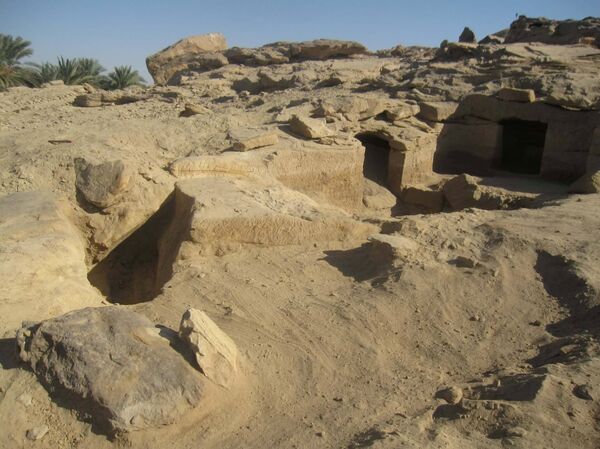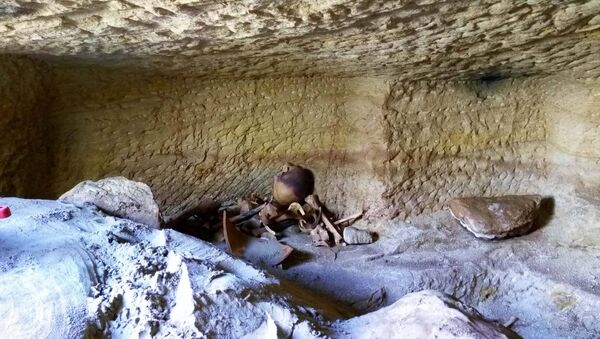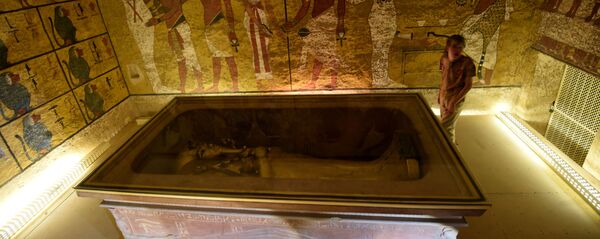The tombs were unearthed by Egyptian and Swedish archaeologists several kilometers south of the famous Valley of the Kings, RIA Novosti reports citing Egypt’s Ministry of Antiquities.
"What makes these tombs interesting is the fact that whole families were interred there – men and women of various age categories, children and even household pets. The presence of children’s remains in these tombs confirms that the nobility of Gebel el-Silsila region of Egypt (where the discovery was made) lived in large families," said Nasr Salama, director of Aswan archaeological area who took part in the excavation.
It should be noted that last spring archaeologists already discovered a necropolis which they finished excavating by autumn.
This time scientists have discovered twelve tombs of varying size containing the remains of members of local nobility, along with a considerable number of cultural and religious artifacts, jewelry and foodstuffs.

One of the most amazing discoveries made during the excavation were the remains of a crocodile interred next to one of the sarcophaguses, which hints that crocodiles and the crocodile-headed god Sobek were particularly revered in Gebel el-Silsila.
Scientists believe that the people interred in the tombs belong to the upper classes of Egyptian society as none of the remains exhibit signs of infection or malnourishment prevalent among slaves and peasants. On the other hand, the traces of bone fractures led archaeologists to believe that these people were involved in some punishing physical work.
These discoveries confirm that Gebel el-Silsila was not a poor village populated by unskilled laborers involved in tomb construction, but rather a rich settlement, though its residents’ vocation remains unclear.


